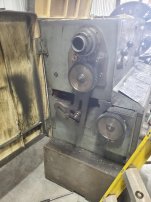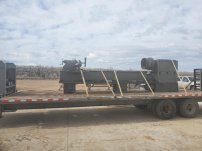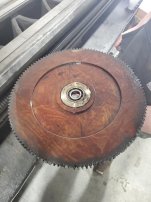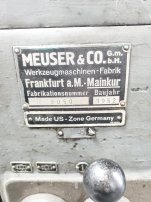ThatGuysFarm
Plastic
- Joined
- Nov 28, 2023
We just picked up a Meuser & Co 9050 1952 lathe. We re in the process of getting it hooked up and were cleaning it as it's been sitting awhile, opened up the end and a gear was missing some teeth. We removed the gear and turns out it is wood. Is this factory? I've never seen a wooden gear on a lathe, I'm not a lathe guru by any means either. Anyone know where we can get a replacement? We are thinking about 3D scanning it and then maybe 3D print one out of plastic? I attached pictures of the lathe and the wooden gear. Any info would be great, thanks.





